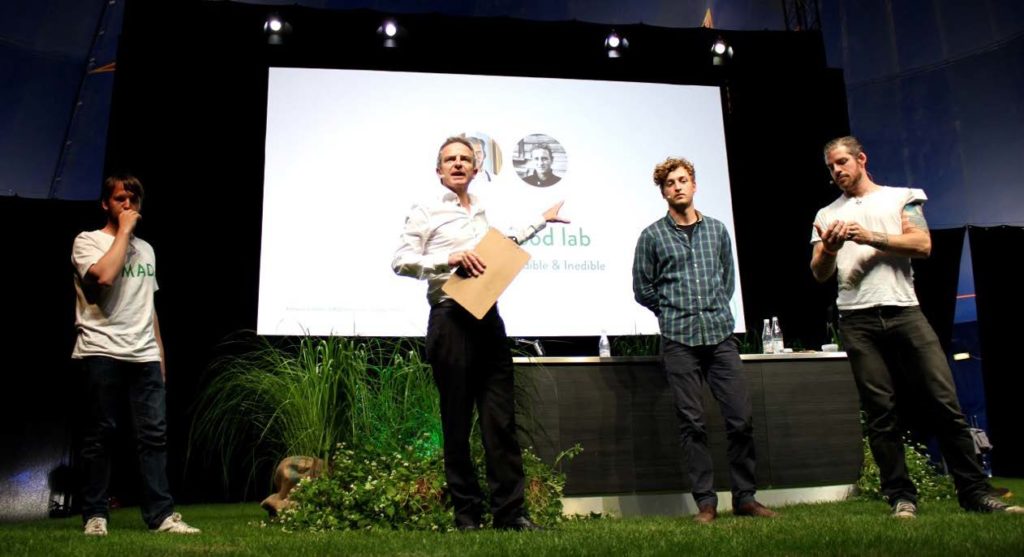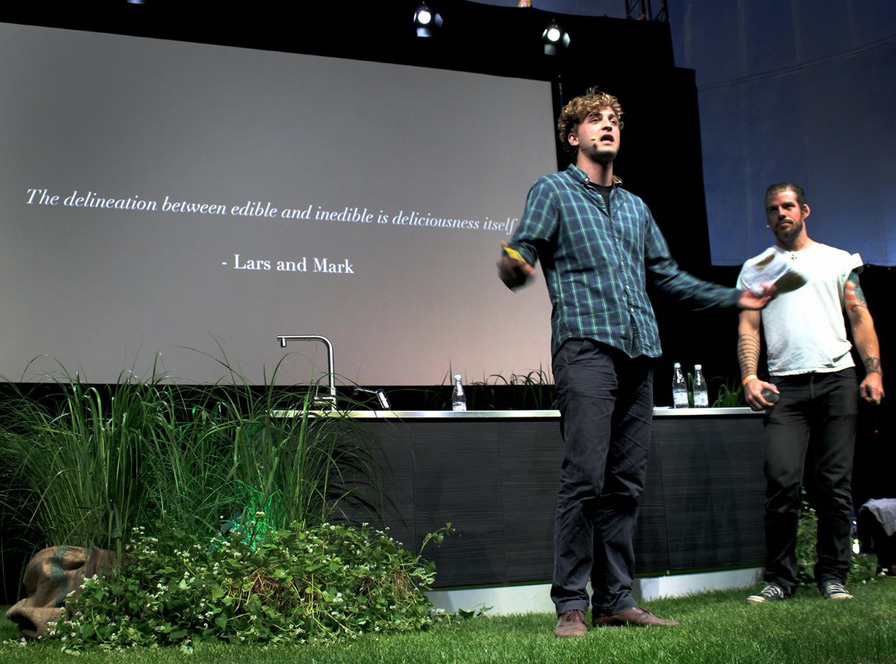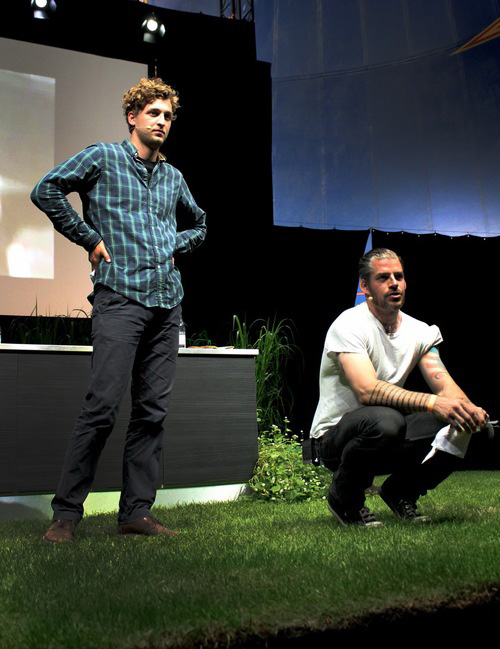by Josh Evans.

Towards the end of June, work at the lab slowed as we donned our boots and headed out to the rain-soaked fields at Refshaleøen. The circus tent was up and the tasks were set to prepare the site for the second MAD Symposium, a thus-far annual gathering of chefs, producers, thinkers, and leaders in food from around the world.
The theme of this year’s symposium was ‘appetite’, and the twenty or so speakers delivered a huge range of talks, from the incredibly polished to the conversational; there was sharing of research, demonstrations of all sorts, musings on the larger, less tangible forces of culture, stories most of us could never begin to think up, and of course, some delicious and intriguing samples. Some of our favourite presentations were those by Roddy Sloan, who supplies Noma with sea urchins from the northern reaches of Norway, and Patrick Johansson from Sweden, also known as the Butter Viking, who makes the most interesting and expert butters. Other notables included David Chang, Wylie Dufresne, Dan Barber, Paul Rozin, Hugh Fearnley-Whittingstall, and Ferran Adrià. All shared their thoughts with style.
Nordic Food Lab also gave a presentation. We have been thinking a lot lately about the relationship between ‘edibility’ and ‘deliciousness’: what makes something good to eat and why? How can we come to understand more deeply the systems that tell us, in different places and times, what we can – and what we should – put ‘inside’ to transform the ‘outside’ into part of us?

This set of questions underlies much the work we do here at the lab. Lately it has led us to the investigation of finding creative ways to make insects delicious to the Western palate.
“The delineation between edible and inedible is deliciousness itself”
— Lars and Mark
These are the facts: 70% of the world’s cultures eat insects in some form; they require vastly fewer resources to raise and produce much less waste than ‘higher’ animals; and they can be reared in areas inhospitable to more conventional livestock. The research in this field is still young, but so far they seem to be a highly sustainable food, especially compared to current global meat production.
The largest barrier, of course, is to find creative ways to make insects not only acceptable to eat in Europe and North America but celebrated for their gastronomic value. We need to find the deliciousness latent in insects and clarify it towards the Western palate.

Lars and Mark worked hard on the presentation, particularly the week leading up to the Symposium, and based on the conversation it started it looks like it went over well. We handed out some of our experiments for the audience to try, including live ants (to me they taste like lemon and caramel, like a seared lemon rind), mayonnaise made with bee larvae instead of eggs, and a garum fermented from grasshoppers and wax moth larvae instead of fish. Not everyone tried our samples, but those who did, it seemed, were converts.
How do you take something ‘inedible’, like an insect, and bring it into the category of the edible? One of the many powers of cooking, and science in general, is that it can bring us into a new understanding and appreciation of the world. Instead of serving a cricket whole on a plate, as other attempts at normalising entomophagy have done, in this case it is more effective to transform the raw material into something that will be recognised as delicious before edibility is even raised as an issue. If it looks and smells and tastes delicious, it must be edible, right?

This is our strategy: instead of accepting, as contemporary culture does, that something must be edible before it can be delicious, we see these two categories as distinct, though overlapping, like a Venn diagram. Just as there are foods that are edible but not necessarily delicious (certain ‘weeds’ for example), there are also foods that can be delicious before being considered edible in popular consciousness. It is this boundary we want to push, to explore this vast range of delicious flavours in order to incorporate an increasingly wide array of foods into the sphere of the edible.
Q&A after the presentation with Mark, Lars, and René, moderated by Jon Mulholland, the editor of The Observer.
Our talk, as well as all the others, will be available on the MAD website in a few weeks. Until then, though, here’s our recipe for grasshopper garum.
Grasshopper Garum
Insects 400g Whole Grasshoppers 600g Wood Grubs
Fermented Barley 225g of pearled parley from a biodynamic supplier. Aspergillus orzyae, for barley
Fermenting 300g of filtered water 240g of salt
Insects Blend until broken up but not into a smooth purée and keep in a container.
Fermented pearl barley Soak the barley for 24 hours. Place in a perforated gastro tray and steam at 100c for 90 minutes and then cool, mixing occasionally so that the individual grains do not clump together. When temperature is 30c or below lightly dust with fungus Aspergillus oryzae, continuously mixing to insure even coverage. Cover container with a damp cloth and place in a high humidity environment at approx 30c-35c. Let ferment for 18 hours and then mix, breaking clumps. Allow another 18 hours to ferment, now mixing every 6 hours. Check out this post for more information about koji.
Fermenting Mix insect puree, barley, water and salt together. Place in a non-reactive container with cling film directly covering the surface. Place container in a 40c incubator or suitable area, and allow 10 weeks to ferment. The garum will separate and remain on the bottom of the vessel, and should be decanted with an appropriate pipette. The paste is also excellent, and should be passed through a fine sauce net. In Nordic Food Lab, general, public appearances
